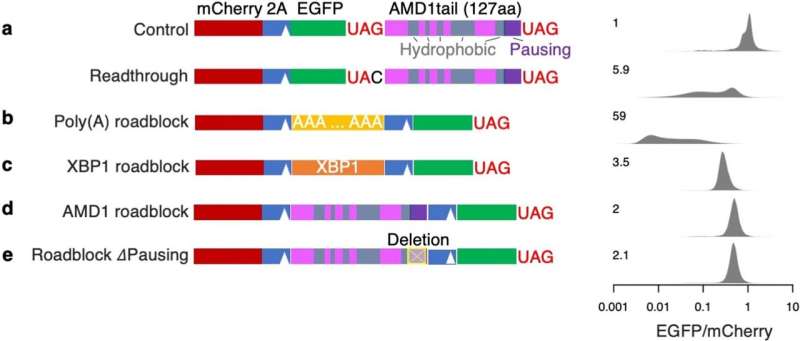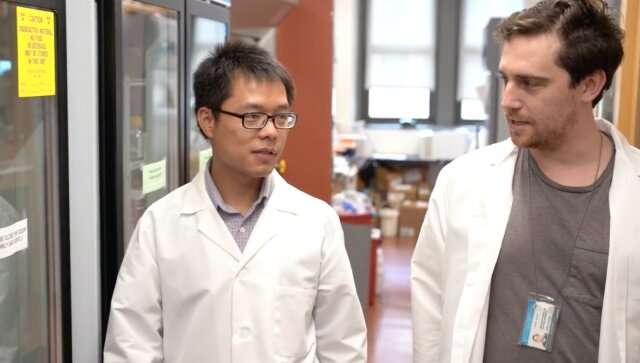This article has been reviewed according to Science X's editorial process and policies. Editors have highlighted the following attributes while ensuring the content's credibility:
fact-checked
peer-reviewed publication
trusted source
proofread
Illuminating tumor cells with dark proteins

Columbia researchers have shined new light on how the "dark" part of the genome allows cancer cells to be detected by the immune system, which could lead to better immunotherapies.
The immune system recognizes cancer cells by the cells' tumor-specific antigens, fragments of degraded proteins uniquely found on the surface of cancer cells. Previous studies have shown that the vast majority of tumor-specific antigens are produced from the noncoding genome, the "dark" part of the genome that scientists believed, until recently, did not code for any protein.
How tumor cells display fragments of these "dark" proteins was an open question, now answered in a new study published this week in Nature by Xuebing Wu, Ph.D., assistant professor of medicine and systems biology at Columbia University Vagelos College of Physicians and Surgeons, and his team.
"Many previous studies have tried to describe this process, but each of those focused on just a single or a handful of DNA sequences," Wu says. "They have made very important discoveries, but there is little agreement with each other. It's unclear whether the mechanisms they discovered applied broadly to all types of noncoding sequences in the genome."
Seeking a more comprehensive answer, Wu and his team, led by two graduate students—Jordan Kesner and Ziheng Chen—used massively parallel analysis involving about 10,000 human noncoding genetic sequences and millions of synthesized random sequences. "What we discovered is a unified mechanism applicable to all types of noncoding sequences," Wu says.

That led them to uncover a signal unique to noncoding sequences that triggers the degradation of those nonfunctioning protein, the first step toward making antigens. The researchers then knocked out every human gene using the CRISPR technology, which revealed the molecular machinery that recognizes this signal—the BAG6 complex.
"The BAG6 complex thus represents a potential drug target for tuning the visibility of cancer cells to the immune system," Wu says.
A fundamental finding
"The tumor-specific antigen is one of the reasons why our research is important," Wu adds, but the paper also uncovered something more fundamental about the way cells deal with nonfunctioning proteins and how some of these nonfunctioning proteins eventually evolve into functional ones.
The majority of "dark" proteins are likely nonfunctional or even toxic in cells and need to be removed. The new research reveals that the BAG6 complex identifies a large percentage of these proteins and sends them to be destroyed.
The production of nonfunctional proteins increases with age and may be contributing to the development of neurogenerative disorders and other diseases, as well as cancer. Drugs that target BAG6 function could potentially treat these conditions, Wu says. "Once you figure out the molecular mechanism inside the cell, you open the door for developing new therapies."
More information: Jordan S. Kesner et al, Noncoding translation mitigation, Nature (2023). DOI: 10.1038/s41586-023-05946-4



















